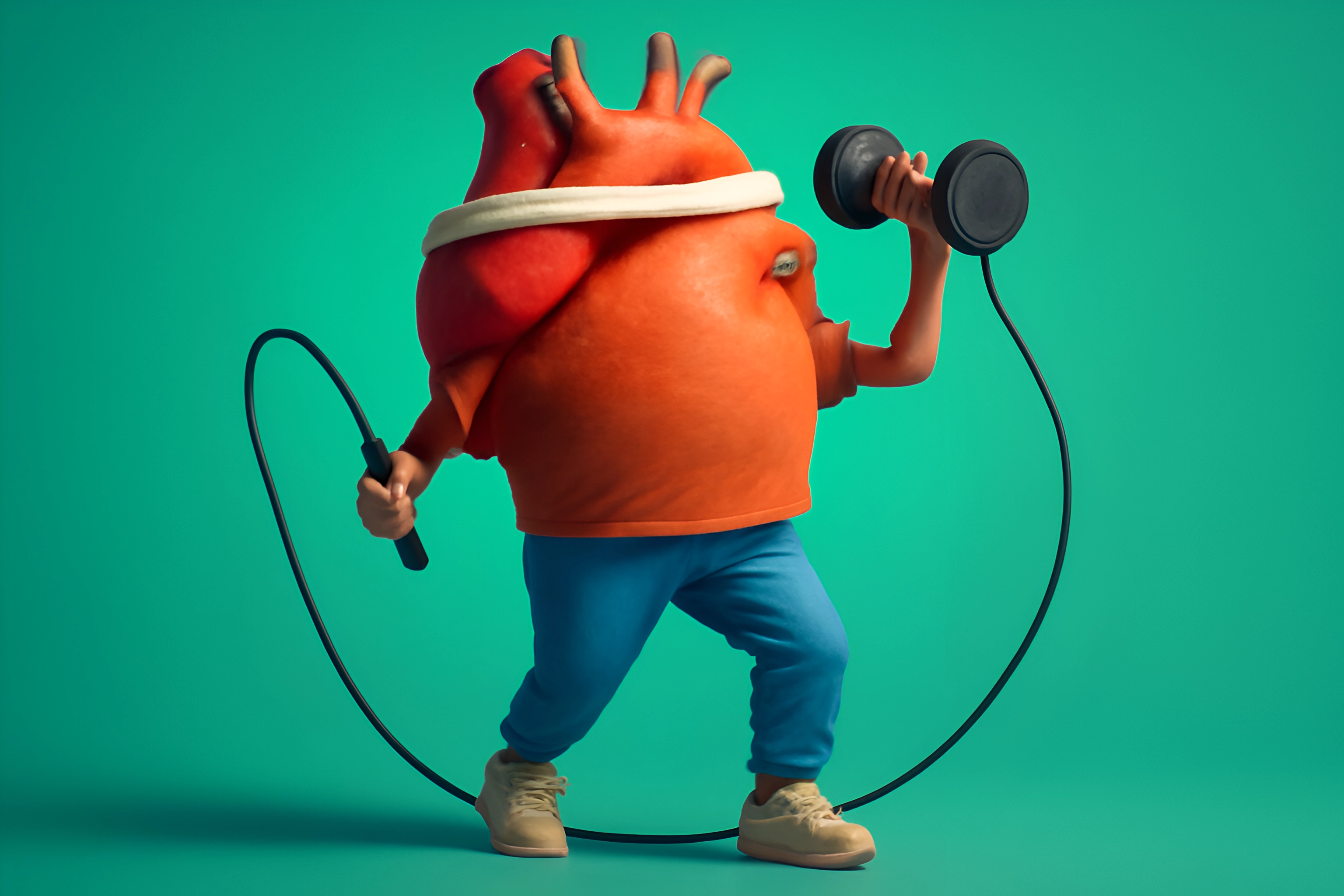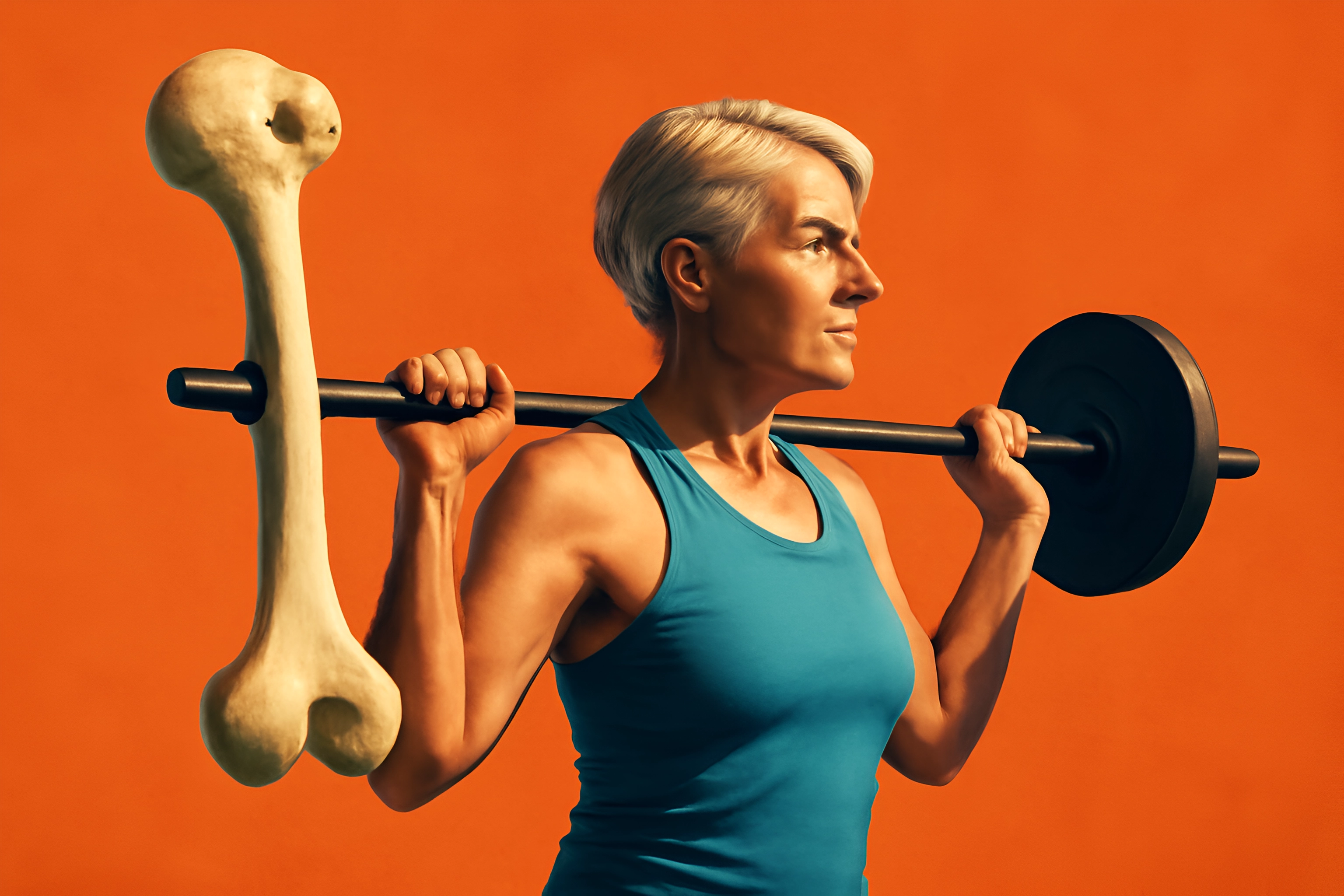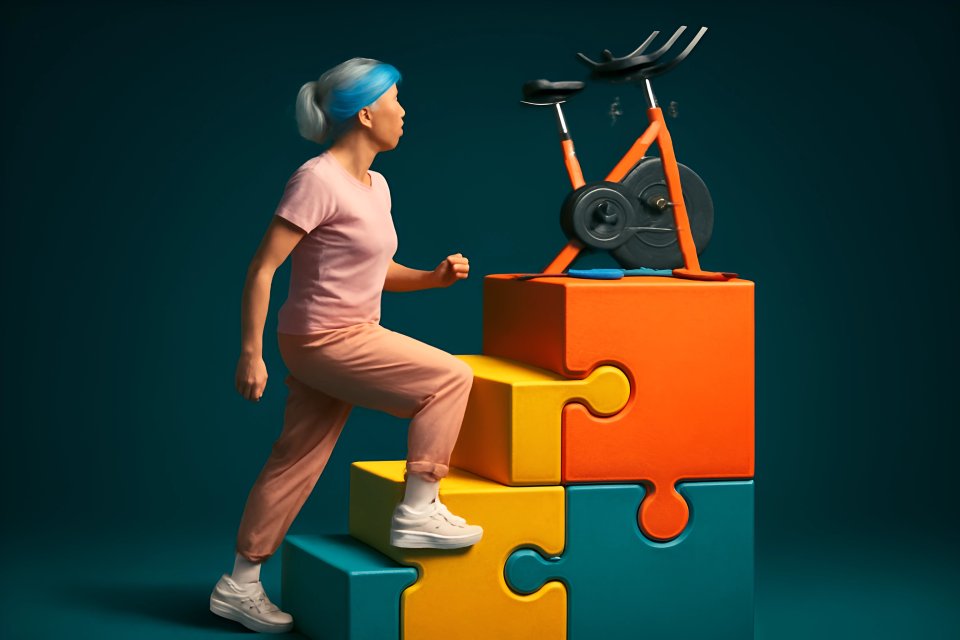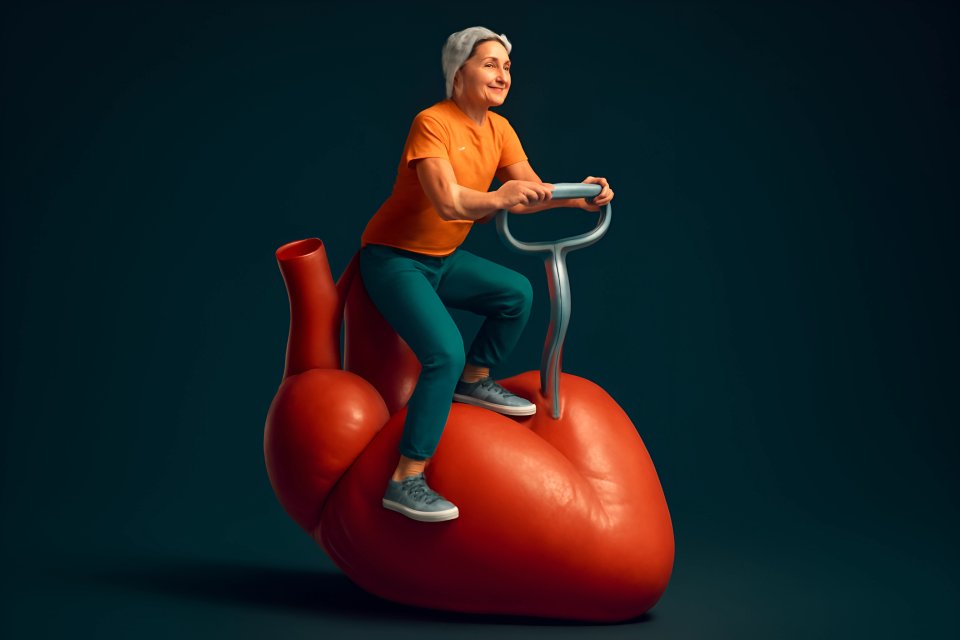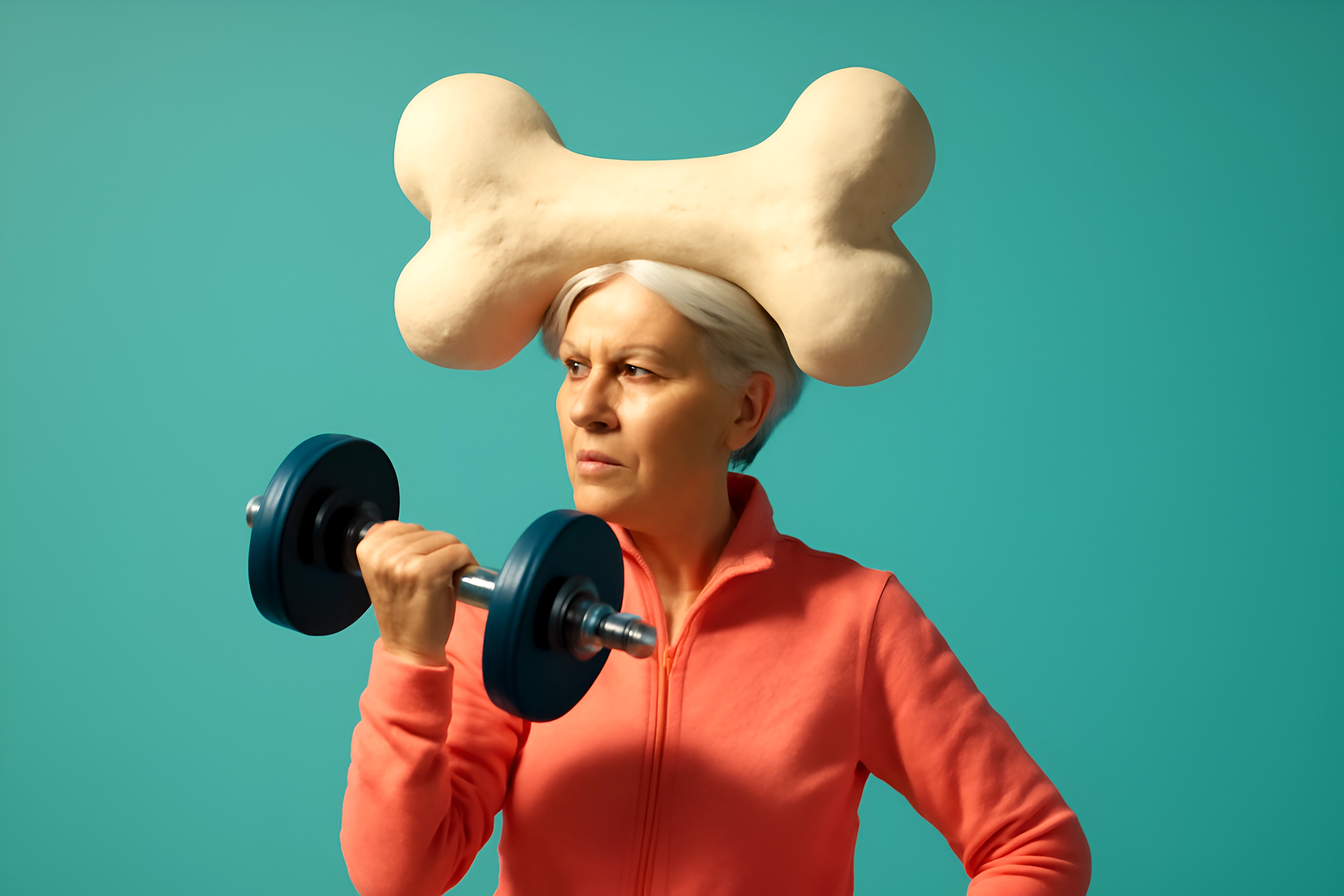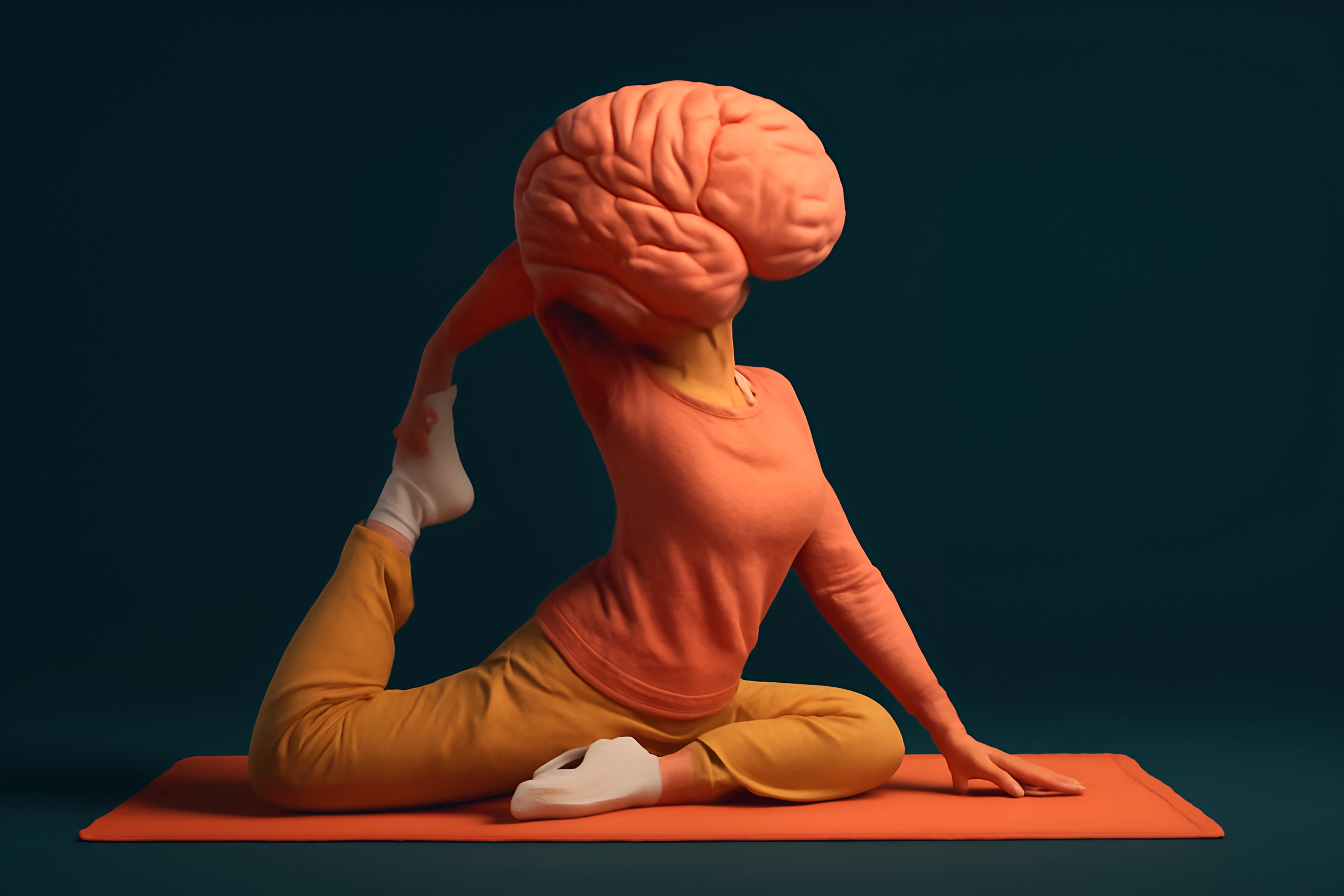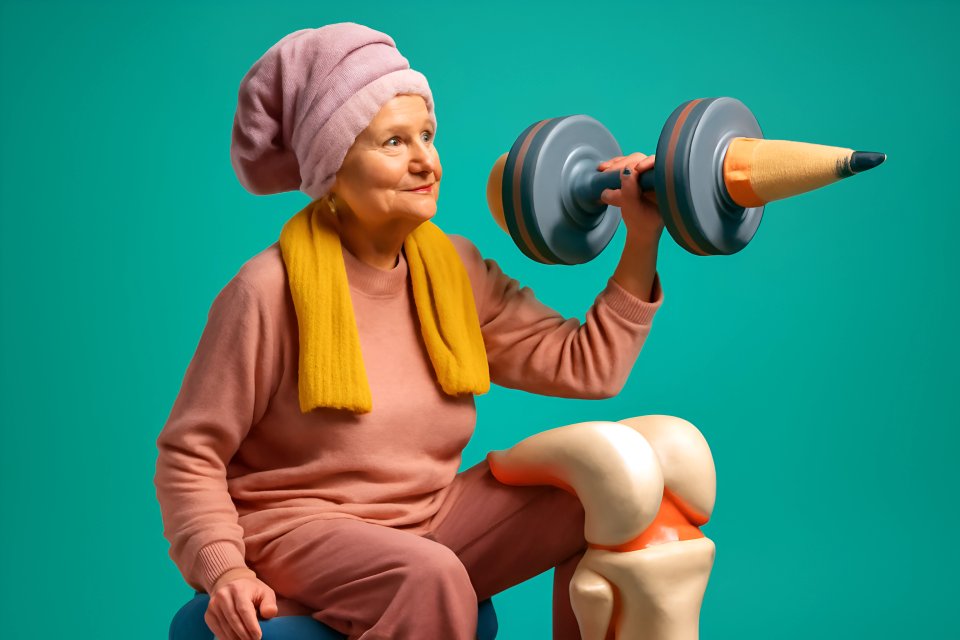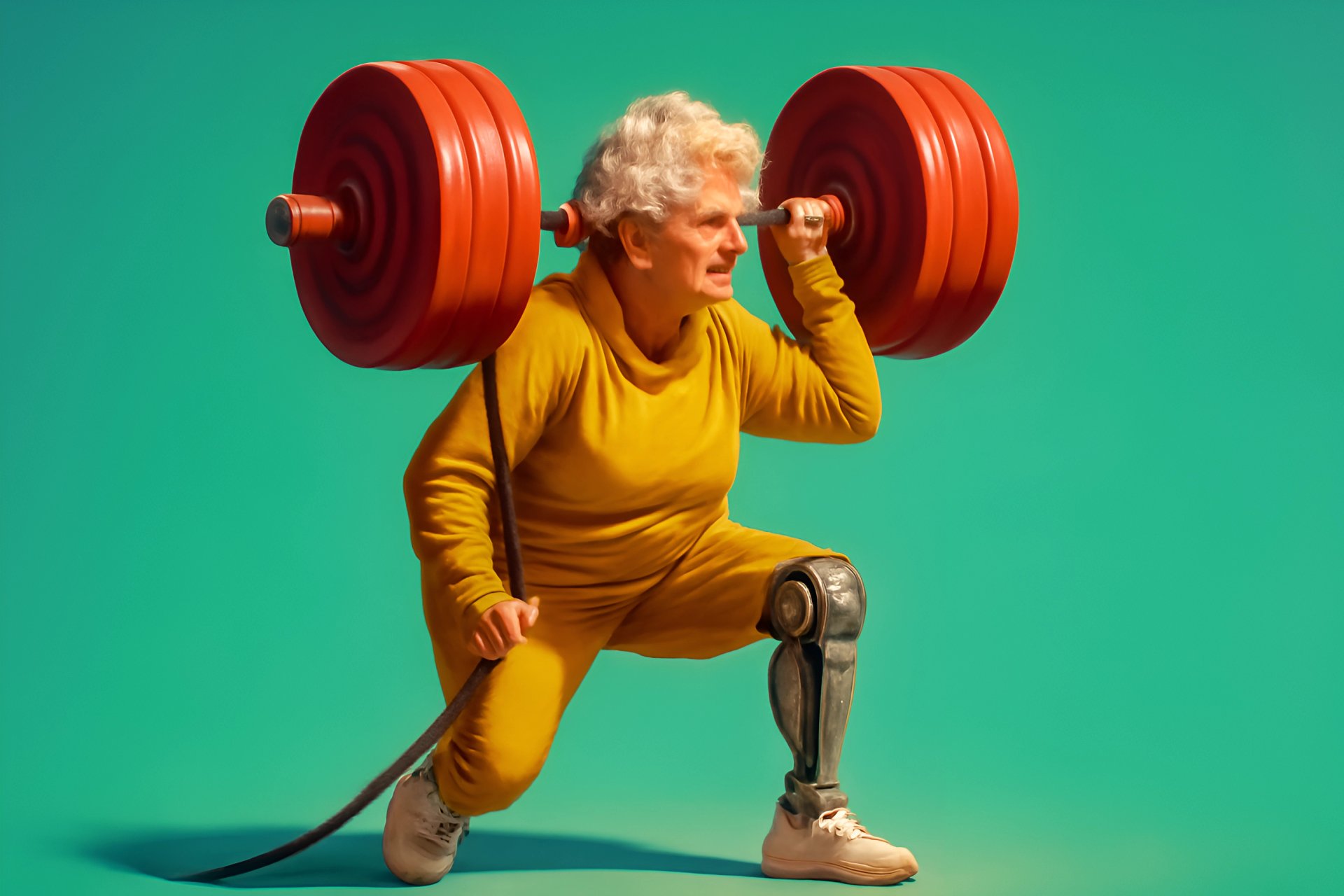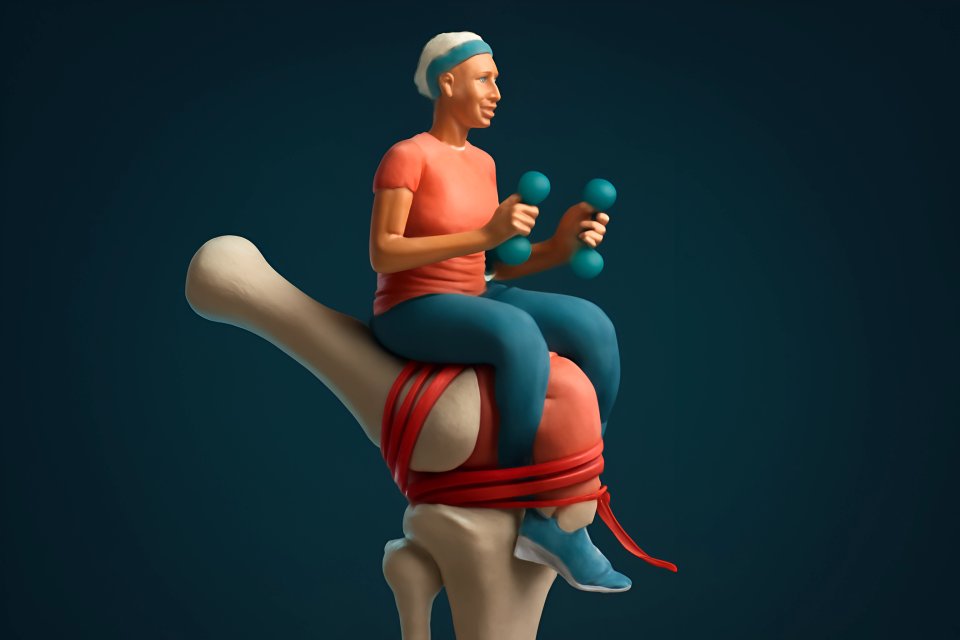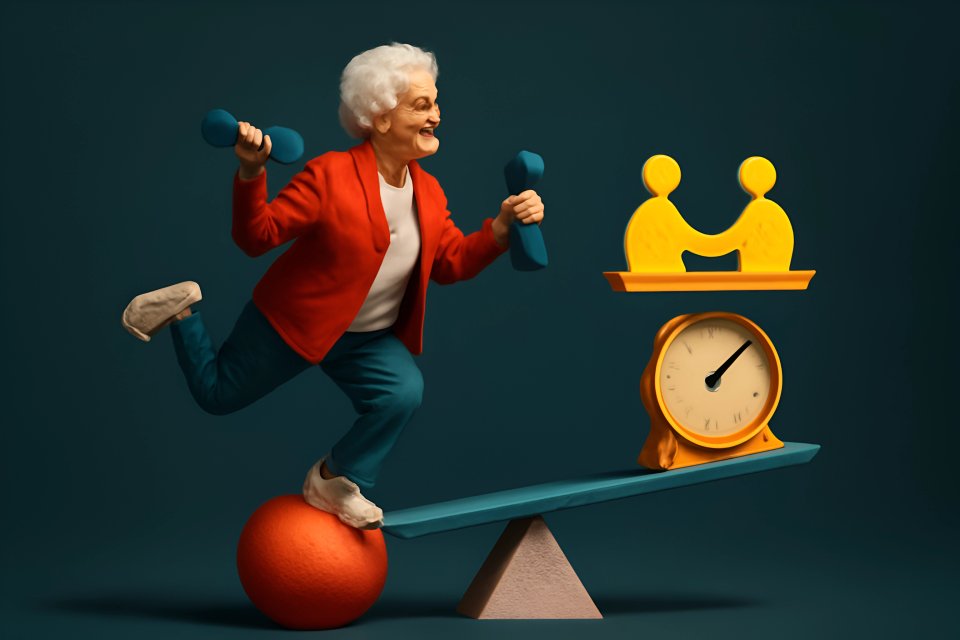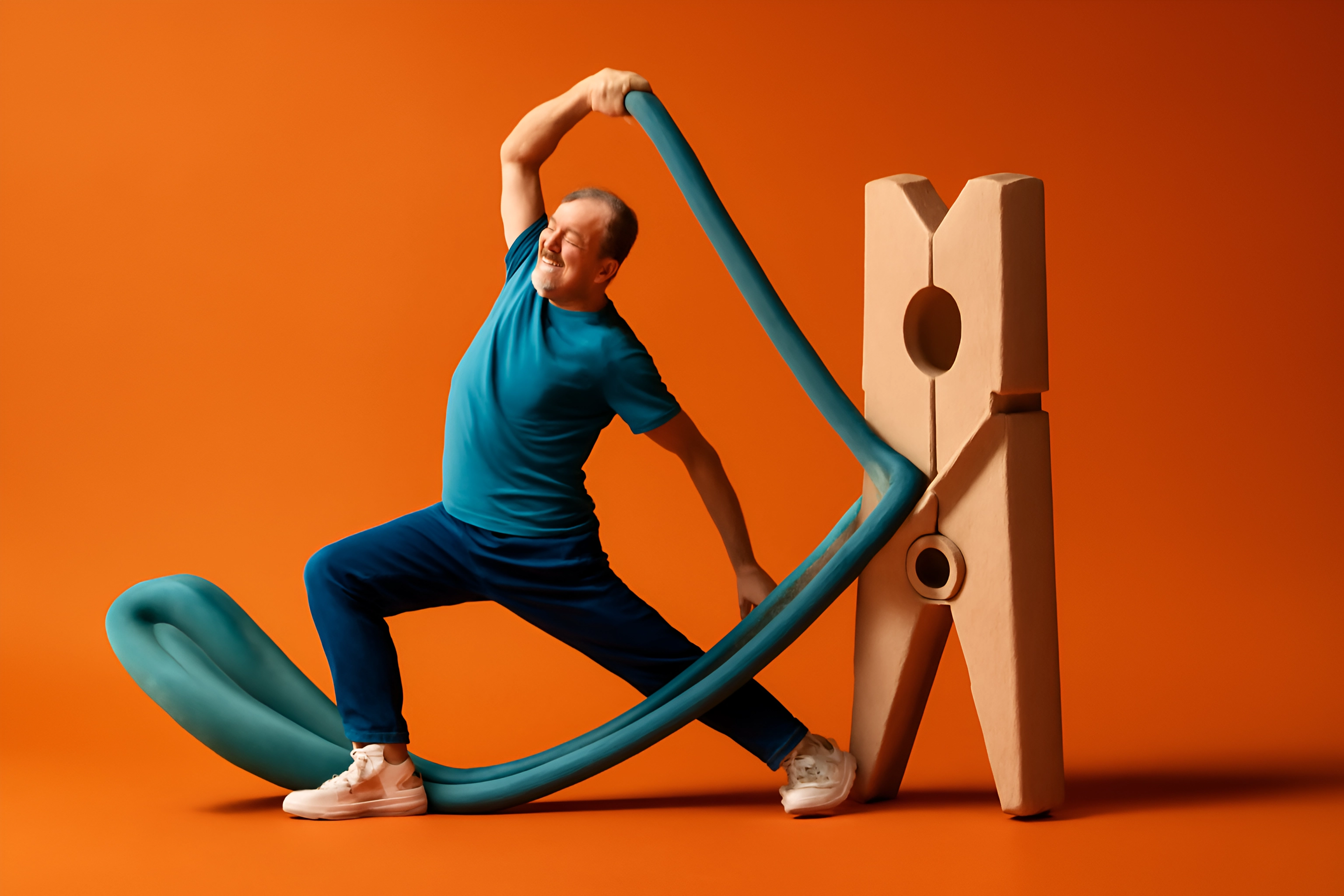
Remember when a "warm-up" meant grabbing your ankle and holding a static stretch for 30 seconds? While that has its place, preparing your body for movement after 50 requires a smarter, more active approach. It’s an approach that respects where your body is today and prepares it for where you want to go tomorrow.
Do you ever feel that morning stiffness that takes a little longer to shake off? Or maybe you hesitate before a workout, worried about pulling a muscle or aggravating an old ache. This isn't about limitation; it's about your body sending a clear signal that it needs a different kind of preparation to stay safe, strong, and resilient.
The secret to a better, safer workout isn't about pushing harder—it's about starting smarter. The key is dynamic stretching, a method designed to gently wake up your muscles, lubricate your joints, and prime your entire body for confident movement. In this guide, we'll explore the best dynamic stretching techniques for seniors, designed to prevent injuries, boost your flexibility, and help you get the most out of every single activity.
What is Dynamic Stretching (And Why It's a Game-Changer After 50)?
Let's cut through the noise. Dynamic stretching is simply stretching through movement. Instead of holding a pose, you are actively taking your joints and muscles through a full, controlled range of motion. Think of it as a gentle rehearsal for the main event, whether that's a brisk walk, a swim, or a strength training session.
The distinction between dynamic and static stretching is one of the most critical shifts in fitness wisdom for active adults. As experts at University Hospitals TriPoint Medical Center explain, dynamic stretching is the ideal way to prepare for exercise because it actively warms the body. Static stretching, or holding a stretch, is best reserved for your cool-down, when your muscles are already warm and pliable.
Why is this switch so crucial after 50? Because cold muscles are less elastic and more prone to injury. Dynamic movements increase your core temperature and send a rush of oxygen-rich blood to your muscles, making them more responsive and less likely to strain. According to research, a proper warm-up can improve muscle readiness and reduce the feeling of stiffness, giving you the security to move with freedom and power.
| Stretch Type | Best Time to Use | Primary Goal |
|---|---|---|
Dynamic Stretching |
Before Workout | Prepare muscles, increase blood flow, activate nervous system |
Static Stretching |
After Workout | Increase long-term flexibility, cool down the body |
The Top 4 Benefits of Dynamic Stretching for Injury Prevention and Flexibility
Reduces Risk of Injury
This is the big one—the ultimate appeal to our instinct for survival and security. A proper dynamic warm-up is like putting on a suit of armor before you exercise. By gradually increasing muscle temperature and elasticity, you are actively engaging in injury prevention stretching. Research published in a narrative review on the effects of dynamic stretching suggests it can improve factors like balance and proprioception, which are critical for preventing falls and missteps. You're not just stretching; you're building a more resilient body.
Improves Range of Motion and Mobility
Do you want to bend down to tie your shoes without a groan? Or reach for that item on the top shelf with ease? This is where dynamic stretching shines. It directly translates to better functional movement in your everyday life. By actively moving your joints through their intended paths, you are lubricating them and gently encouraging a greater range of motion. This isn't just about athletic performance; it's about maintaining your independence and quality of life.
Enhances Workout Performance
A body that's properly prepared simply works better. When your muscles are warm and your nervous system is fired up, your movements become more efficient and powerful. This means you can walk with a more confident stride, generate more power in your golf swing, or lift weights with better form. As physical therapists often note, a dynamic warm-up prepares the entire body for physical activity, allowing you to get more benefit from the effort you put in.
Boosts Body Awareness
How often do you truly listen to your body? Dynamic stretching forces you to slow down and pay attention. These gentle, controlled movements help you connect your mind to your muscles, allowing you to notice any areas of tightness or discomfort before you put them under stress. This heightened awareness is a powerful tool, helping you make smarter decisions during your workout to avoid pushing past your limits.
7 Gentle and Effective Dynamic Stretches for Your Warm-Up
Here are seven simple yet powerful movements to build your pre-workout routine. Remember, the goal is smooth, controlled motion, not speed or extreme range.
1. Arm Circles (Forward and Backward)
Benefit: This simple move is fantastic for warming up the delicate rotator cuff muscles in the shoulder joint and mobilizing the upper back.
Instructions: Stand with your feet shoulder-width apart and your arms extended out to your sides at shoulder height. Begin by making small, controlled circles with your arms, gradually increasing the size of the circles. Perform 10-15 circles forward, then reverse the direction for 10-15 circles backward.
Safety & Modification: Start with small circles. If you have any shoulder pain or a history of injury, keep the movement smaller and well within a pain-free range.
2. Torso Twists
Benefit: This movement gently mobilizes the thoracic spine (your mid-back) and begins to warm up your core muscles, which are essential for stability.
Instructions: Stand with your feet slightly wider than shoulder-width apart and your knees slightly bent. You can either cross your arms over your chest or hold them out in front of you. Gently twist your upper body from side to side in a smooth, rhythmic motion.
Safety & Modification: Keep your knees soft and allow your feet to pivot as you twist to protect your knee joints. For extra stability, you can perform this movement while holding onto the back of a sturdy chair.
3. Leg Swings (Forward and Sideways)
Benefit: Leg swings are one of the best ways to open up the hip joints and dynamically stretch the hamstrings, hip flexors, and adductors.
Instructions: Stand next to a wall or a sturdy chair, placing one hand on it for support. Keeping your torso upright, swing one leg forward and backward like a pendulum. After 10-12 swings, turn and face the wall to perform side-to-side swings, crossing the leg in front of your body. Repeat on the other leg.
Safety & Modification: This is a must-do with support! Do not attempt this without holding onto something for balance. Focus on a smooth, controlled swing, not a high kick. The movement should originate from your hip, not your back.
4. Cat-Cow Stretch
Benefit: An absolute classic for a reason, Cat-Cow improves spinal flexibility and is incredibly effective at relieving back stiffness and warming up the core.
Instructions: Start on your hands and knees in a tabletop position, with your wrists under your shoulders and your knees under your hips. Inhale as you drop your belly towards the floor and look up, arching your back (Cow). Exhale as you press into your hands, round your spine towards the ceiling, and tuck your chin to your chest (Cat). Repeat for 8-10 cycles.
Safety & Modification: If your knees are sensitive, place a folded towel or a cushion under them for support. This can also be done while seated in a chair: place your hands on your knees and alternate between rounding and arching your spine.
5. Marching in Place with High Knees
Benefit: This is a perfect low-impact way to gently raise your heart rate, increase blood flow throughout the body, and warm up the large muscles of the legs like the hip flexors and glutes.
Instructions: Stand tall and begin marching in place, lifting your knees up towards your chest. Keep the movement slow and deliberate, focusing on control rather than speed. Swing your arms naturally as you march.
Safety & Modification: Lift your knees only as high as is comfortable for you. If you feel unsteady, hold onto a countertop or the back of a chair for balance.
6. Ankle Rolls
Benefit: Ankle mobility and stability are crucial for preventing trips and falls. This simple exercise lubricates the ankle joint and prepares it for weight-bearing activities.
Instructions: While seated in a chair, lift one foot off the floor. Slowly rotate your ankle in a circular motion, making 10 circles in one direction, then 10 in the other. Repeat with the other foot.
Safety & Modification: This is best performed while seated to isolate the ankle joint without having to worry about balance.
7. Bodyweight Squats (Partial Range)
Benefit: This movement activates the largest muscles in your body—the glutes, quads, and hamstrings—preparing them for any activity.
Instructions: Stand in front of a sturdy chair with your feet shoulder-width apart. Keeping your chest up and back straight, bend your knees and push your hips back as if you are about to sit down. Lower yourself only a few inches, then press through your heels to return to a standing position.
Safety & Modification: Only go down as far as feels comfortable and strong. Use the chair behind you as a safety target, aiming to just tap it before standing back up. This is one of the best flexibility exercises for over 50 that also builds foundational strength.
How to Build Your 5-Minute Dynamic Warm-Up Routine
You don't need a complicated, hour-long routine. Five minutes is all it takes to properly prepare your body and drastically reduce your risk of injury. The key is to create a simple sequence you can do every single time, without fail.
Here is a sample routine you can use before your next walk, workout, or round of golf. Perform each movement for about 30-45 seconds, flowing smoothly from one to the next.
1. Marching in Place (45 seconds)
2. Arm Circles (10 each way)
3. Torso Twists (10 each side)
4. Leg Swings (10 each leg, forward & sideways)
5. Cat-Cow (5-8 cycles, if space allows)
6. Bodyweight Squats (8-10 partial reps)Most importantly, listen to your body. The goal is to feel warm, loose, and ready—not fatigued. This short routine is a non-negotiable investment in your health, ensuring you can stay active and do the things you love for years to come.
Conclusion: Move Better, Feel Better, and Stay Active for Life
A few minutes of intentional movement before you exercise is one of the most powerful investments you can make in your long-term health and mobility. It's a promise you make to your body that you will prepare it, protect it, and respect its needs. This simple act transforms your workout from a potential risk into a confident step toward a stronger, more vibrant you.
Embracing dynamic stretching techniques for seniors isn't just about preparing for a workout—it's about preparing your body for a vibrant, active, and confident life. You have the power to move with more freedom and less fear, starting today.
What's your favorite way to warm up? Share your go-to pre-workout move in the comments below! We'd love to hear from you.
After your warm-up, you'll be ready for the main event. For some great, joint-friendly workout ideas, check out our guide on Low-Impact Cardio Ideas: Heart-Healthy Exercises for the 50+ Crowd.


